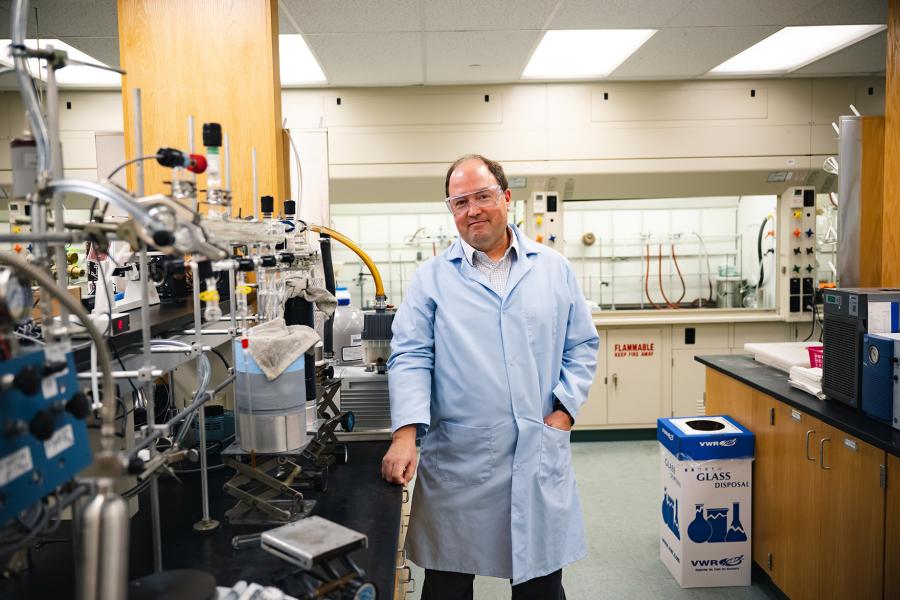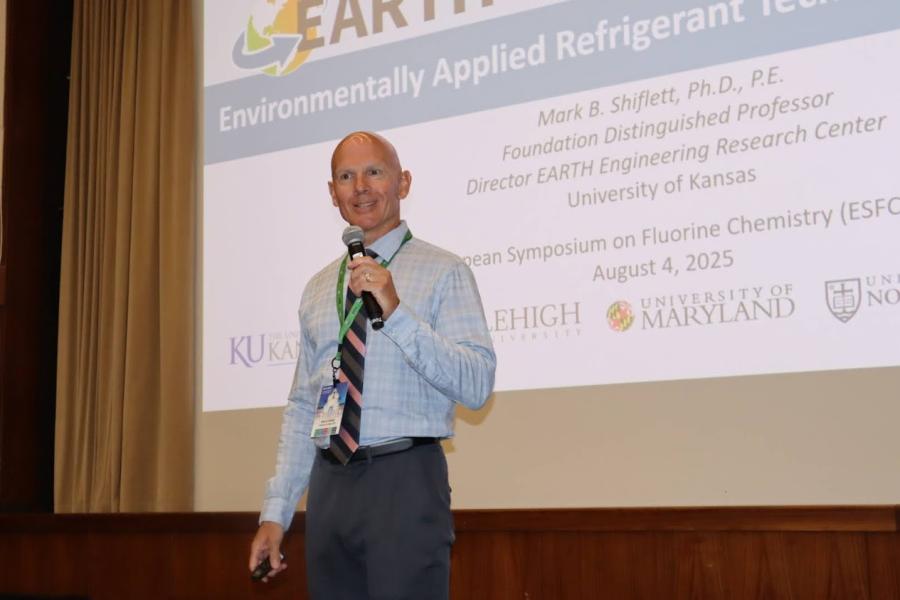Environmentally Applied Refrigerant Technology Hub
Industry Descends on EARTH
ERC Overview
EARTH is founded on four ERC pillars: convergent research, impact and belonging, engineering workforce development, and innovation ecosystem, which will impact the engineering and scientific communities, the HVACR industry, and society.

The Challenge
Heating, ventilation, air-conditioning, and refrigeration (HVACR) are essential to the quality of life for all humans. HVACR systems are widespread throughout society, enabling transportation and preservation of fresh foods, storage of medicines, and cooling of buildings. However, most refrigerants used today are hydrofluorocarbons (HFCs), which have high global-warming potential (GWP), with 2000-4000 times the impact of CO2. Combined with high leak rates (direct effect — 50-90% of refrigerants leak into the atmosphere) and high energy consumption (indirect effect — 20-40% of U.S. residential and commercial building electricity usage comes from HVACR), HFCs account for 7.8% of total greenhouse-gas emissions. In response, the U.S. and 170 other countries are phasing down HFCs in accordance with the Kigali agreement, F-gas regulations, and American Innovation and Manufacturing (AIM) Act, creating a tremendous societal challenge to responsibly and sustainably replace billions of kilograms of refrigerants.

To address this challenge, a multi-institution, multi-disciplinary team put together a new NSF Engineering Research Center (ERC): Environmentally Applied Refrigerant Technology Hub (EARTH), to create a “sustainable refrigerant lifecycle” to address technical, environmental, and societal challenges facing the HVACR industry.

Our Vision
EARTH will create sustainable, accessible refrigeration and air conditioning innovations that improve the quality of life for all, address current and future environmental challenges, and secure U.S. leadership in workforce development and manufacturing.
Thrusts

Reclamation & Repurposing

Novel & Safe Refrigerants

Energy Efficient Systems

Our Mission
EARTH will serve as the national refrigerant research center that will enable the refrigeration and air conditioning industry, federal government, policymakers, and professional and environmental organizations to (1) innovate future system technologies to utilize highly efficient and safe refrigerants with low environmental impact; (2) develop and implement new practices for effectively reclaiming, separating, and recycling refrigerants; (3) invent novel processes for converting legacy refrigerants into future products; and (4) support the education and training of an impactful workforce.
Our Policy and Impact
- Current refrigerants (Hydrofluorocarbons or HFCs) will be phased out according to the American Innovation and Manufacturing (AIM) Act passed by Congress and signed by the president in Dec, 2020 due to high global warming potential (GWP)
- Montreal Protocol, Kigali agreement and European F-gas regulations requiring similar phaseout of HFCs in 170 countries
- Phase out of HFCs over next two decades is estimated to create 150,000 new jobs, increase manufacturing by $39 Billion in the U.S., and reduce global temperature rising by 0.5 ºC
- Refrigeration and Air-Conditioning (RAC) accounts for 20% of U.S. energy consumption
- RAC industry is strategic to U.S. national interests – maintain export market

EARTH News

EARTH: A New Way to View the Blue Sky

Industry Descends on EARTH

A new use for old refrigerants
